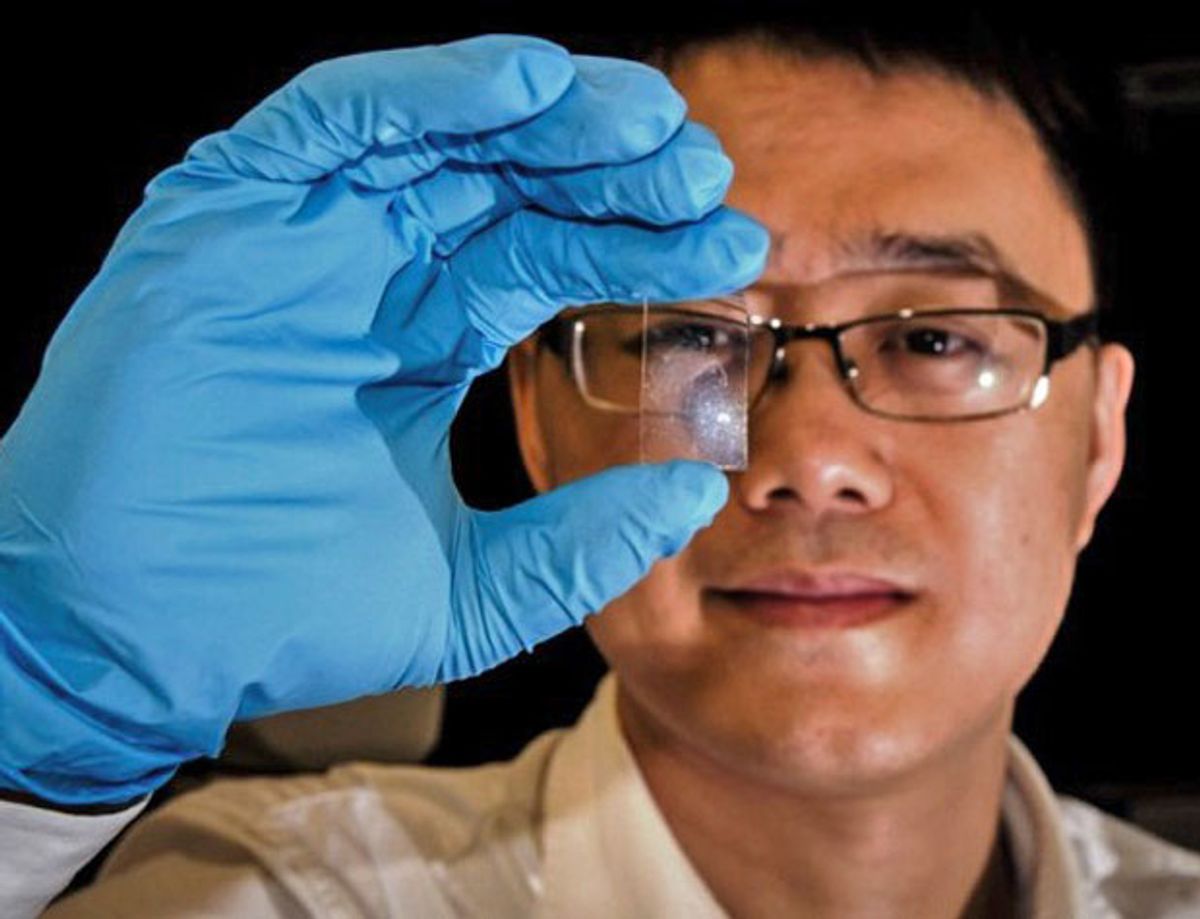[Editor’s note: This post was originally published with the headline “Graphene Image Sensor 1000 Times More Sensitive to Light.” The new headline reflects changes to the post that correct a factual error about the relative performance of a new graphene image sensor. A press release out of Nanyang Technological University heralded the creation of a graphene sensor by researchers there, ascribing to it a 1000-fold increase in the light sensitivity over “current imaging sensors found in today’s cameras.” But in the paper detailing their work, the researchers actually reported that the photo-responsivity (with high photoconductive gain) of the graphene sensor was three orders of magnitude greater than other graphene-based imaging sensors.]
Graphene has become an attractive material for optoelectronic applications because it can absorb light over a broad wavelength range. However, just as in electronic applications, graphene has struggled in optoelectronics because it lacks a band gap.
However, now researchers at Singapore’s Nanyang Technological University (NTU) have engineered a graphene-based image sensor so that their photoresponsivity has been improved by three orders of magnitude over previous versions of the device.
“We have shown that it is now possible to create cheap, sensitive and flexible photo sensors from graphene alone,” said Wang Qijie, assistant professor, NTU’s School of Electrical & Electronic Engineering, in a press release. “We expect our innovation will have great impact not only on the consumer imaging industry, but also in satellite imaging and communication industries, as well as the mid-infrared applications.”
The new graphene-based sensor, which is described in this month’s Nature Communications ("Broadband high photoresponse from pure monolayer graphene photodetector"), the NTU team believes can be mass produced.
By engineering a band gap into the graphene, the NTU researchers essentially trapped light-generated electron particles for a longer amount of time, which created a much stronger signal. These signals could then be processed into an image.
While dramatically improving the photoresponsivity (with high photoconductive gain), Wang still believes that the underlying technology of the graphene sensor has even more room for improvement. “The performance of our graphene sensor," Wang says, "can be further improved, such as the response speed, through nanostructure engineering of graphene, and preliminary results already verified the feasibility of our concept.”
Image: Nanyang Technological University
Dexter Johnson is a contributing editor at IEEE Spectrum, with a focus on nanotechnology.



